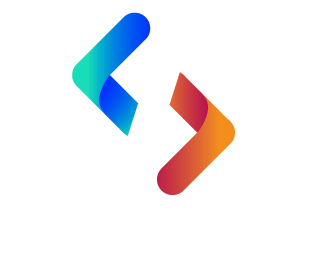Web development, is the work involved in developing, designing and maintaining websites as well as web-based applications that operate in the browser. It could, however, include Web design and development, programming for web and management of databases.
The development of web applications is connected to the design of the functionality and features of applications (web development). The term”development” is generally used to describe the actual development of these items (that is programming websites).
The primary tools utilized in web development are the programming languages, such as HTML (Hypertext Markup Language), CSS (Cascading Style Sheets) as well as JavaScript. However, there are several other software programs that are used to “manage” or assist in the development of websites which would otherwise need to be created “from scratch” through the writing of code. Many CMS for content management (CMS) belong to this category, which includes WordPress, Joomla!, Drupal, TYPO3, and Adobe Experience Manager, among other ones.
What exactly do you mean by Web Development?
Web design is definitely connected to the task of creating the features and functions of websites and applications (often described as “web design”) However,”web design” or “web development” phrase is generally used to describe the building and programming of websites and apps.
Consider all the web pages you’ve visited throughout the years. Web Developers built those sites to ensure that they worked properly and functioned with ease, ensuring the best user experience. Web Developers accomplish this by writing code using various programming languages that vary in accordance with the tasks they’re executing and the platform they are working on.
Web Development vs. Web Design
Although there is some overlap, there are some important distinctions in web design and development. design. Let’s have a look:
Web Designers
- Make everything that users see on a software or website product which includes the visual colors, typography and usability features
- Directly with clients to design designs or collaborate with an team to create the vision of the client
- It is possible to require the knowledge of programming languages, or some basic coding abilities, or at the very least an understanding of popular languages like HTML, CSS, PHP and JavaScript
- Create wireframes and prototypes in order to explore design concepts, provide feedback on logos and designs branding, corporate style, and brand guidelines
Web Developers
- Write the code that will make an application function, whether it’s at the front end or the backend (server-side)
- Develop or implement designs that are requested by a customer or designed by the design team
- Expert-level understanding of several programming languages, such as HTML (HyperText Markup Language), CSS, PHP and JavaScript as well as extending the language to different languages (Ruby C/C++ Python) and frameworks and libraries
- Rarely, create mockups, choose the typography or colors palettes
What are the most Common Programming Languages?
The most popular programming languages that are used in web development include:
- HTML (Hypertext Markup Language)
- CSS (Cascading Style Sheets)
- JavaScript
Different types of web development
There are three primary kinds of Web development: front-end design back-end development, and complete-stack development.
What is Front-End Development?
Front-end development is the “client-facing” aspect of development for web applications. In other words, generally front-end web development relates to the component of the website or app product that users see and engage with. The Front-End Developer, then is in charge of the way that a digital product appears as well as “feels,” which is the reason they are sometimes called Web Designers.
Front-End Web Developers concentrate on translating web design and ideas into code. Front-end Software Developer takes the design ideas of others on team members working on web-based development and turns to make them real, acting as an interface between technology and design.
Front-End developers will typically need to have a good understanding of programming languages, such as HTML, CSS, and JavaScript along with frameworks such as React, Bootstrap, Backbone, AngularJS, and EmberJS. A Front-End Developer’s responsibilities will include developing responsive websites (that appear and function properly regardless of the device) and conducting testing of websites and fixing any issues discovered in the process of developing websites and making sure that the structure of the site is in line with SEO best methods.
Front-End Development Jobs
In contrast to back-end development, there are many job titles that encompass various skill sets and levels of experience in front-end development. Examples include:
- Front-End Developer
- Front-End Engineer
- CSS/HTML Web Developer
- Front-End Web Designer (this is usually a position which has more interaction design and visual needs)
- Front-End User Interface Developer (covering interaction design skills)
- A Mobile Front-End Developer for Web Development
- Front-End SEO Expert (usually being a Developer who has prior experience in implementing SEO strategy)
- Front-End Accessibility Expert
- Front-End Development Ops
- Front-End QA (involving tests for functionality, users testing as well as A/B tests)
What is Back-End Development?
While Front-End Developers have the responsibility for the way a digital product looks, Back-End Development is focused on how the product functions. A Back-End Developer develops the foundation of an online site prior to maintaining it and making sure it works as it should, which includes interaction with databases, authentication for users servers, network and hosting configuration, as well as business logic. Behind the scenes or server-side – Back-End Developers deal with the structures and systems which allow computer programs to work as intended.
The main responsibility that Back-End developers have is ensuring the performance of the website as well as its responsiveness and speed. In order to do this Back-End Developers must understand how to create servers that use modern frameworks (while developing custom APIs , and serving static files and websites) as well as managing databases as well as other data on the web server.
Most Back-End Developers utilize programming languages that run on servers, such as PHP, Ruby, and Python and tools like MySQL, Oracle, and Git.
What is a Full-Stack Developer?
An Full-Stack developer is experienced in the back-end and front-end development. Full-Stack Developers typically know the vast array of programming languages. Because of their flexibility they could be assigned greater authority in projects than developers with a focus. They are generalists, proficient in balancing both roles, and are proficient in every level of development. It is evident that employers want to hire Full-Stack Developers . According to the findings of an Indeed study, they’re the fourth most sought-after job in the tech industry.
If the title of the job is contentious is due to its generalization job. Developers who are specialized in the front-end or back-end usually scoff at the idea that someone can be equally skilled in both areas – the phrase “jack-of-all-trades the master of all trades” comes to mind.
“My defensive tendencies are typically at a high alert whenever I hear that magical phrase (‘full-stack ‘),” wrote Front-End Developer Andy Shora. “Stacks are significantly larger than they used be. Being in a position to say that one has gained expertise in every level in web design is not a modest claim. Do you think this means you have an array of abilities or that you are a specialist in all areas?”
However however, there is an increasing percentage people in the tech industry who call theirself Full-Stack Developers. According to the most recent Stack Overflow study of developers, 48.2 percent consider themselves Full-Stack Developers.
What’s not clear is whether Developers are expected to have a wider range of skills or if they are attempting to be able to understand the functions of both the front-end and the back-end. Whatever the case it’s becoming increasingly crucial for those who want to become Developers to possess an understanding of both.
“For the majority of people who want to make it into the world of web improvement it is best to focus on making a name for yourself with both back-end and front-end advancement first.” suggested Tech Writer and Software Engineer Muhammad Anser. “At the point you are ready you’re able to float toward the spotlight in the future.”
In addition, with the the demand for developers projected to increase by 15 percent in 2026 (for 24,400 new jobs) and much faster that what is the U.S. average rate of job growth, there could be no better time to get involved and discover more about the various levels that comprise Web Development.




